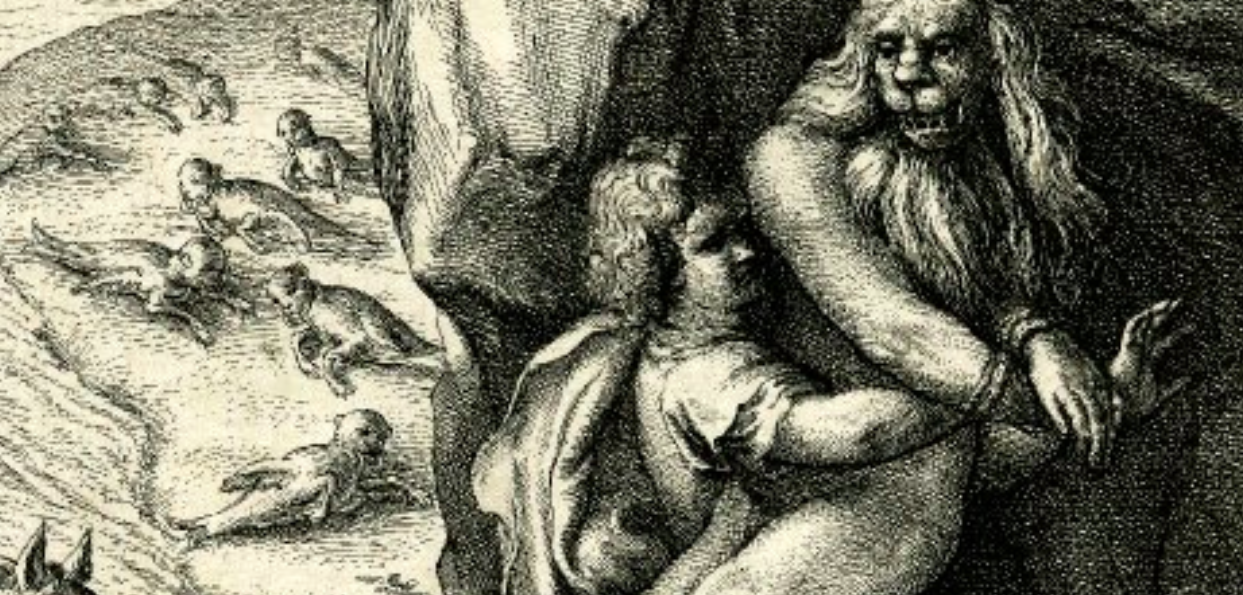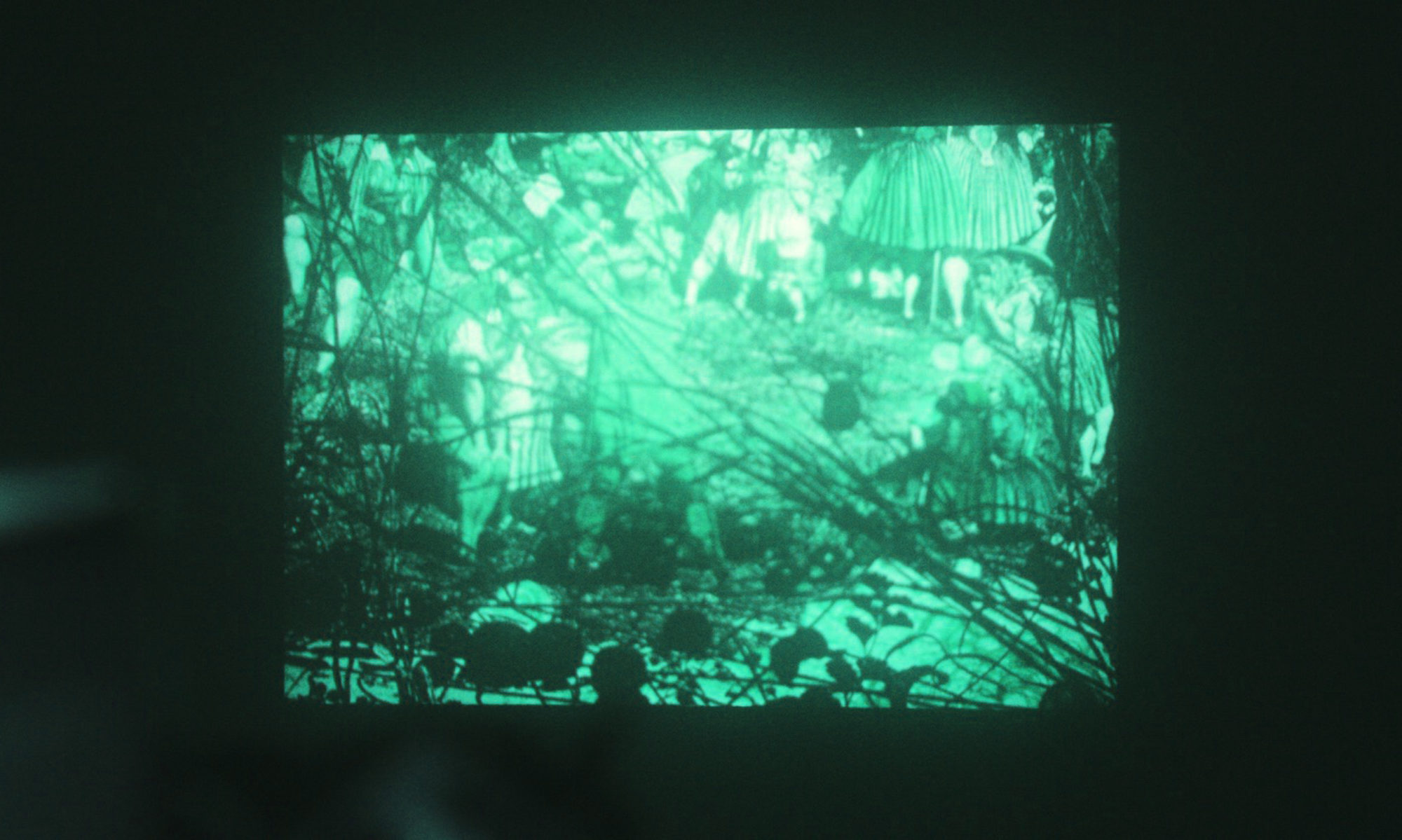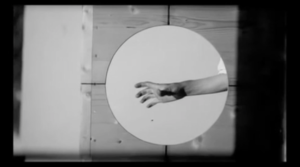NB: I see JD has posted below; I haven’t read his posting yet. I drafted most of what follows here below on Wednesday evening, but then found I had more to say, and kept pecking away on it today. So these are my thoughts on this past week, but before reading Jeff’s Class 9 post. -DGB
I really thought today was an extraordinary class — I am still humming a little with the excitement of the thinking I feel we did together today.
I am afraid, however, that this very sense of intellectual exhilaration makes me feel quite hopeless about the task I am setting to now. How the heck to go about recapturing the best of those delicate moments of tender insight into difficult and important texts? For readers of this blog, Week 9 may really be one where “you had to be there.”
That said, I can convey a very precise version of one part of what happened in Dickinson 230 during our 170 minutes – because Greg gave us the OK on uploading his punctum exercise for this week, from which we began.
Recall that this was our assignment:
”Prepare a ‘dispatch from a moment of calm,’ on the model of Kluge and Richter, including both text and image. (Video essays are quite as welcome as paper submissions.) Your moment can be identical with your chosen spatio-temporal punctum, or related to it, bearing upon it by any of the modes of association K & R permit.”
And here is what Greg gave us (remember that his punctum is the “mid-century” watershed; i.e., what we might call, oxymoronically, “the long 1950”):
I really appreciated this as an effort to activate Kluge’s highly idiosyncratic mood of historical inquiry. Greg called the style “nomadic,” referring here to History and Obstinacy. The term feels right in a number of ways. I pressed a little bit on whether his punctum exercise was really a “dispatch from a moment of calm,” and I understood Greg to say that his short film is in fact working the terrain of H & O a little more than that of Dispatches from Moments of Calm. That remains my impression as I look at the punctum exercise again.
After watching Greg’s piece, we spent some time with the simple but challenging question: what sort of thing is this?
Meaning: what is the status of work like Greg’s?
I have certainly been exposed to a number of installation videos in art spaces that I think are frankly inferior to Greg’s punctum exercise this week. But our class is not an MFA studio. And Greg did not make this work (I don’t believe) as a “specimen of video art.” My understanding is that he made it in an effort to think about the mid twentieth century (and questions of nature/technology in the world of art/design) in a manner informed by a critical engagement with Kluge and Negt. My own view is that Greg’s exercise is a very successful effort to do just that. Which is to say, I take it to be a thing like a paper one would write for a seminar — a work of inquiry/research/exposition.
Maybe this is obvious, and maybe my pausing upon the question of the status of work like this (and by extension, the status of the more-or-less “experimental” work that many of us are doing in this seminar) is simply a distraction — symptomatic of an otiose methodological navel-gazing. Maybe the fact that zones of “artistic research” and zones of “experimental scholarship” overlap is perfectly unremarkable at this point, and requires no explanation or special comment.
But as I tried to express in our discussion, I do still find this zone of overlap puzzling. I strongly support work in this area, and endeavor (often with Jeff, though also in other contexts) to encourage work of this sort — which I also think of myself as attempting to make in various forms and settings. But I very frequently find myself seeking some theory for, or even “defense” of, work of this sort. There is a part of me that clearly seeks some principled account of the place of such work in the topology of learning and expressive activities.
I do have some things to say about all this, but I think the most pressing points to make here are simply that: 1) I am keen to see work like this in the seminar; and 2) I feel very non-doctrinaire about the status/value/nature of this kind of work, and am genuinely curious to get your sense of all this.
Relevantly, I did try, in our class discussion, to characterize the cognitive/affective “condition” I associate with work like Greg’s punctum — and I even used a kind of Klugesprache in doing so. What I said was that such work engenders in me a pleasing superposition of tight-grasp and loose-hold. I likened this state to a mental version of the physical posture I ascribe (in my fervid imagination) to Menelaus trying to hang on to Proteus in (book IV of The Odyssey).

Recall that Proteus’s superpower is rapid (and kinda random/unpredictable) metamorphosis. This meant one second you were trying to hang on to an antelope and the next moment you were clutching a branch at the top of a tree. In both cases the thing was trying to shake you, so you really had to hold it tightly. At the same time, you had absolutely no idea what was coming next, and you needed to be ready to shift your grip in a heartbeat. I am very drawn to a mental equivalent of that adamantine/elastic hybrid of SEIZING and RELEASING (it is really a kind of seizing-in-order-to-release and releasing-in-order-to-seize). I feel like I am doing one of the best things I can do with my mind when I am working with it in that way — but you can really only do it on certain classes of objects. I love these kinds of objects, and spend a lot of time trying to figure out what characterizes that class of objects (as a class).
At any rate, I got that feeling good and proper watching Greg’s punctum exercise, so whatever the class is, it includes, for me, his thing.
This all may seem sort of excessively a “loop-into-what-Graham-likes,” and hence merely personal. But my contention would be that this limber synthesis of GRIP AND GIVE is also the posture of mind wanted for reading Kluge. Especially for reading History and Obstinacy – which is itself very interested in questions of grip.
Why?
Well, there are two questions there: 1) why is that state optimal for reading Kluge? and 2) why are Kluge and Negt so interested in grips?
On the first: Kluge is himself a very interesting hybrid of critical scholar and creative artist, and thus his work is exemplary of the Protean Problem (hang on, because it is demanding to grasp, and it is gonna change sharply and radically according to a logic that defies easy prediction).
On the second: the “grip” offers a nice example of the kind of “labor capacity” that has mostly slipped the attention of political economists, even of the most progressive and imaginative stripe (see p. 88). I read Kluge/Negt as especially interested in such a kind of “primordial” substratum of our labor, because he/they hope to locate, in this layer of our beings (and our relationship to work) some “emancipatory” potential — some as-yet-not-adequately-activated-but-potentially-politically-important SOLIDARITY that might offer a way “forward,” i.e., out of the crippling/straightening conditions of capitalism as we know them. The analogy (though is it more than that?) would be the moment of “secret sharing” in a glance:

That is from Devin Fore’s very valuable introduction to H & O, which was not assigned, but which you should try if you find yourself wanting more on Kluge. (I found the stuff on Kluge’s relationship to historical “fact” in this introduction really interesting, so I am going to drop in a PDF of those three pages; the conjunction of the subjunctive and indicative moods discussed in here goes to the heart of some of my deepest preoccupations with historical method — those of you curious about my take on some of this could look here or here).
*
There is just so much to say about all of this. I am going to skip a larger effort to “cash out” (hate that phrase!) this idea of the “subterranean association of all labor capacities,” and instead just put in a quick plug for the “historicizing” observation I tried to offer on H & O. What I said was that I read Kluge/Negt as very much embedded in (or coming out of) the late-70s/early-80s moment of sociobiology. I am thinking of a book like David Barash’s The Hare and the Tortoise of 1986. In a basic way Kluge and Negt’s story of “History” and “Obstinacy” is working the same terrain as the many thinkers in Barash’s orbit who were trying to analyze the human condition in terms of “Culture” (meaning social and technological evolution) and “Nature” (meaning our “biological” inheritance; our “animal beings,” evolving at the pace of natural/sexual selection).
I do not want to push this point to hard, but if one were, someday, to try to contextualize H & O in a proper intellectual history, I think one would need to reach back into the debates about “human nature” that emerged out of the Cold War (and that are very powerfully recovered by my colleague Erika Milam in her new book Creatures of Cain).
*
I need to keep moving, or this is going to go on forever!
For me, the real discovery of this week was Dispatches from Moments of Calm. What an absolutely extraordinary book. I felt so strongly the mood of the text all week. And it gave me a sense that writing my own punctum exercise in its key was going to be both easy and a joy. In practice, it was more challenging than I thought (the style is very particular — its “impersonality” does not come easily to me; and the “flatness” of the prose [the very limited use of “tropes” of any kind, the near absence of those winks of structure-signaling that give a paragraph what I think of as its presence-of-thinker] is not my native mode). But my sense was nevertheless right: so thoroughly does the book convey its “quality of address to the world,” and so capacious does that quality feel, there seemed to be NOTHING that could not be folded into its purview, and NOTHING that it could not cause to stand in relation to my specific puctum. This felt like magic.
So much to say, so much to say!
I told you all that, for me, this book opened a tiny and totally compelling peep hole view onto a totally different world of what could be conveyed/achieved under the rubric of “news.” And in doing so it dramatically heightened my appreciation of the implicit social architecture that is referenced in (and, of course, instantiated by) the news-discourse we actually have. I referred to that structure as a kind of monstrous Aztec pyramid/ziggurat — on the flat, empty, cloud-hidden top of which “events” occur. There, some set of “figures” have “agency.” And what they do is essential to “us.” But in another way, “we” have nothing to do with all that. It composes us, but we are not “part” of it.
The Dispatches signal a world of “news” made from and about us. A kind of utopian-anarchist-Fourierist horizontal news-discourse, made of propinquity, chance, obliquity, hesitation, contingency, gesture, impression, experience. Made, in short, of us, of humans. And, for that matter, non-humans too.
I went so far as to suggest that Dispatches should be read as a kind of palinode to Benedict Anderson’s endlessly cited Imagined Communities. That book depicts how everyone reading those cursed daily newspapers together/apart constituted the nation. That collective daily act effected the synchronic choreography of (illusory) participation in the thing called the nation-state. In practice, that newspaper reading can be thought of as the high ritual of that ziggurat I invoked above: up there, on the olympic-sacrificial summit, there were agents and events; the people were made by their knowledge of both, but the people were not part of that world, by definition.
Oh how different it would all be if the newspapers ran Dispatches from Moments of Calm, every day! WE would BE THE NEWS. It is literally a kind of secular-socialist rose of the empyrean. I have not glimpsed a more truly utopian proposition in quite some time. Amazing book. Amazing project.
*
There was much more in the discussion. There was the large matter of whether (or how?) Dispatches from Moments of Calm may be called “Ironic.” The term was important to Jeff. I resisted it — and resist it still, I think. It is not that I cannot understand what Jeff means. It is true that the “coolness” of Kluge’s voice is legible as a “distance” — and that in that distance one senses a dispassion or remove that one associates with the position/posture/mode of “irony.” But my reading of Dispatches, my sense of its enormous and totally earnest hunger for a totally different kind of human community, leaves me sensing something much closer to the prophetic than to the ironic. Prophets can use irony, to be sure. And it is true that they are sort of “distant” in a way (concerned as they are with another world), but I don’t think of prophets as “ironic.”
That said, James did shake me a bit with his insistence that Richter’s images may be playing a different game. I have not been able to get past that. I think this is correct. I had felt the images and the texts as a kind of convergent/congruent enterprise. My sense was that the images were striving to constellate the same lateral community via counter-news that I felt in the texts. I have come to suspect, now, that this was an illusion. An illusion created by the extraordinary gravitational field generated by Kluge’s stories. I think they literally pull Richter’s images (which are, often, on quite different trajectories) into orbit around the Kluge-vision.
*
I must must must stop. But not before I just briskly memorialize the very memorable moment in which Dolven juxtaposed Dispatches with Ali Smith’s How to Be Both. So similar, in our interpretations, the way that the two texts work to conjure a kind of “redemptive” historical consciousness via the activation of a special attunement to what we might want to call the pervasiveness of connection. This, we might say, is the “historical consciousness” on offer in these texts (and it is legible, perhaps, as a manifestation of a striving in our time to make the “connectedness” of our mediated networks into a theory of how the past may be made to conciliate with a future-oriented present). But ultimately it is the differences between the two texts that really trills. In the Smith, the connections are virtuosic and tight; there is a mood of system; while sadness is clearly available, it is not clear that tragedy is. In the Kluge/Richter, the connections are loose and casual; there is a mood of stumbling about and upon, and the result feels inviting; while emotions are few, the sense of the fragility of everything leaves a thin tendril of fear — how beautiful it is, and how easily broken. Therein, to be sure, the tragic.
*
Ok, folks. What can I say? Thank you for a very special class.
(Oh, and here is my punctum exercise for the week, if you are curious).
-Graham

